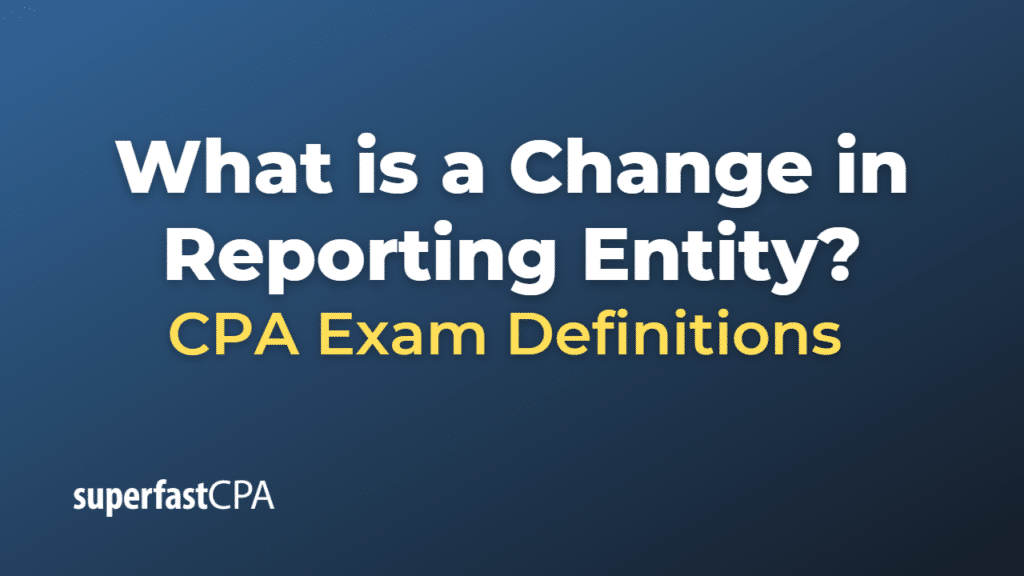Change in Reporting Entity
A change in reporting entity refers to a modification in the composition or structure of an organization, group of organizations, or entities whose financial information is combined to create a single set of financial statements. This change occurs when there is a significant alteration in the nature or scope of the reporting entity, which affects the financial statements’ comparability, consistency, and relevance.
Examples of changes in reporting entity may include:
- Business combinations: When a company acquires or merges with another company, the combined entity’s financial statements represent a change in the reporting entity, as they now include the financial information of both companies.
- Spin-offs or divestitures: When a company spins off or divests a portion of its operations, the financial statements for the remaining entity will represent a change in the reporting entity, as they now exclude the financial information of the spun-off or divested business.
- Changes in the composition of a group: If a parent company consolidates or deconsolidates one or more of its subsidiaries, the group’s financial statements will represent a change in the reporting entity.
- Changes in accounting control: When an organization experiences a change in control or ownership, the financial statements may represent a change in the reporting entity if the new controlling party significantly influences the financial reporting process.
When a change in reporting entity occurs, it is essential to provide appropriate disclosure in the financial statements’ notes to ensure that users of the financial statements understand the nature of the change and its impact on the financial information presented. This disclosure typically includes a description of the change, the reasons for the change, the financial impact of the change, and any necessary restatements or adjustments to the financial statements of prior periods to maintain comparability and consistency.
It is important to distinguish a change in reporting entity from other changes in financial reporting, such as changes in accounting policies, estimates, or principles, as these changes may have different effects on the financial statements and require different disclosure and reporting treatments.
Example of a Change in Reporting Entity
Let’s consider an example of a change in reporting entity involving a business combination.
Company A acquires Company B in a business combination, resulting in a single combined entity. Before the acquisition, both companies prepared separate financial statements. After the acquisition, the financial statements will be prepared for the new combined entity, which now includes the financial information of both Company A and Company B.
In this example, the acquisition represents a change in the reporting entity, as the scope and nature of the entity have significantly changed. The combined entity’s financial statements will now provide information about the financial performance, position, and cash flows of both Company A and Company B together.
To ensure comparability and consistency, the financial statements for the combined entity should include the following disclosures:
- A description of the change in reporting entity, explaining that the financial statements now include the financial information of both Company A and Company B due to the business combination.
- The reasons for the change, which in this case is the acquisition of Company B by Company A.
- The financial impact of the change, such as the total purchase consideration, the fair value of the acquired assets and liabilities, and any goodwill or intangible assets recognized as a result of the acquisition.
- Restatements or adjustments to the financial statements of prior periods, if necessary, to maintain comparability and consistency. For example, if the combined entity decides to present comparative financial information for the previous year, the financial statements should be adjusted to include the financial information of both Company A and Company B for that year, as if the acquisition had occurred at the beginning of the prior year.
By providing these disclosures, users of the financial statements can better understand the nature and impact of the change in reporting entity and compare the financial performance and position of the combined entity across different periods.













